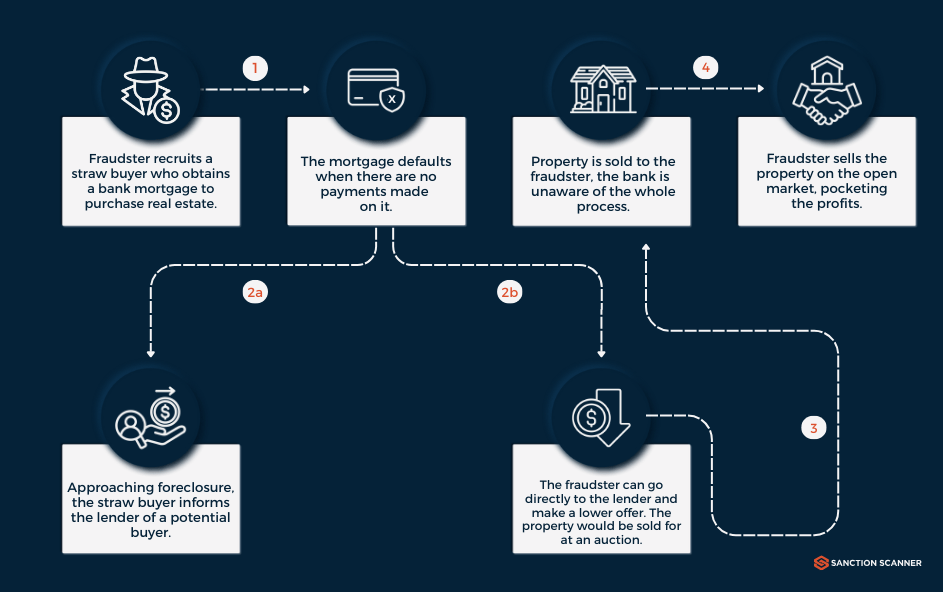Mortgage lender frauds have become a significant concern in today’s housing market. For most people, purchasing a home is one of the largest financial decisions they will make, which makes the mortgage process especially vulnerable to scams. By recognizing the tactics used by fraudsters and learning how to protect yourself, you can avoid falling victim to these common pitfalls.
What Is Mortgage Lender Fraud?
Mortgage lender fraud occurs when individuals or businesses deceive borrowers during the mortgage process. These scams often involve misleading practices, hidden costs, or the outright theft of funds. They can cause financial devastation, legal complications, and, in some cases, the loss of a home.
By understanding the types of mortgage scams out there and their red flags, borrowers can make informed choices to protect their hard-earned money.
Common Types of Mortgage Lender Frauds
1. Loan Flipping or Churning
Loan flipping involves repeatedly refinancing a mortgage to generate excessive fees for the lender. Borrowers are promised better interest rates or terms, but each refinance results in additional costs without providing real financial benefits.
Red Flag: A lender aggressively pushes you to refinance without clear advantages.
2. Phishing Scams
Fraudsters may attempt to steal your banking information by posing as legitimate lenders or agents. These scammers often intercept wire transfers for closing costs or down payments.
Red Flag: Unsolicited emails or calls asking for sensitive financial details or urging immediate wire transfers.
3. Loan Modification Scams
Scammers target struggling homeowners by promising to modify loan terms in exchange for upfront fees. Once paid, they disappear without delivering any help.
Red Flag: Requests for upfront fees with no clear explanation of how the money will be used.
4. Reverse Mortgage Fraud
This scam targets older homeowners by taking advantage of their equity. Fraudulent lenders may mislead them into unfavorable terms or outright steal equity through deceptive practices.
Red Flag: Lack of transparency about the terms of the reverse mortgage or overly complex agreements.
5. Real Estate Agent Fraud
An unscrupulous real estate agent may withhold crucial information about a property or use falsified documents to pressure buyers into purchasing for personal gain.
Red Flag: High-pressure sales tactics or little disclosure about the property’s condition or history.
6. Predatory Lending
Predatory lenders target vulnerable borrowers by offering loans with unrealistic terms, such as extremely high interest rates or balloon payments, which the borrower cannot realistically afford.
Red Flag: Promises like “bad credit doesn’t matter” or loans with unclear or overly aggressive repayment terms.
7. Inflating Home Value or Income
Some fraudulent lenders manipulate a borrower’s income or a home’s value on loan applications to secure approval. This practice is not only illegal but can lead to unmanageable financial burdens.
Red Flag: A lender that suggests inflating financial details to help you qualify for a larger loan.
How to Protect Yourself from Mortgage Lender Frauds
1. Research Lenders Thoroughly
Before committing to a lender, check their credentials, reviews, and ratings. Look for a history of ethical practices and a solid reputation. You can also consult HUD-certified counselors for recommendations.
2. Question “Too Good to Be True” Offers
If a lender promises unrealistic terms like extraordinarily low interest rates or loans for those with bad credit, be cautious as these are often predatory practices.
3. Watch for Red Flags
Be wary of these warning signs during the mortgage process:
- Lack of a good faith estimate (GFE) within three business days of application.
- Fees that differ drastically from the GFE.
- Unwillingness to discuss how brokers or lenders are paid.
- Pressure to sign documents or transfer funds quickly.
4. Verify All Parties in the Transaction
Confirm that everyone involved, from the lender to the real estate agent and attorney, is certified and legitimate. Seek referrals through trusted sources or family and friends.
5. Read the Fine Print
Carefully review all loan documents before signing. Ensure that all terms, conditions, and fees are highlighted and clearly explained. Avoid anyone who discourages you from seeking outside advice.
6. Protect Your Personal and Financial Data
Never share your banking or personal information unless you’re absolutely certain who you’re dealing with. Legitimate lenders won’t ask for sensitive details through unsecured channels.
What to Do If You’ve Been Scammed
If you believe you’ve fallen victim to mortgage lender fraud, act quickly:
- Report the incident to the Federal Bureau of Investigation (FBI), the U.S. Attorney’s Office, or the Federal Trade Commission (FTC).
- Contact your mortgage servicer immediately.
- Seek advice from a HUD-certified counselor to explore possible remedies.
The sooner you take action, the higher the chances of recovering losses and minimizing damage.
Final Thoughts
Mortgage lender frauds can disrupt lives and destroy finances, but awareness is your first line of defense. By understanding the common types of scams, recognizing red flags, and exercising caution at every step of the mortgage process, you can confidently secure a legitimate loan.
Remember, if something seems too good to be true, it likely is. Arm yourself with knowledge, and don’t hesitate to question or walk away from suspicious offers. For anyone navigating the complex world of homeownership, due diligence is key to protecting your investment and your peace of mind.








